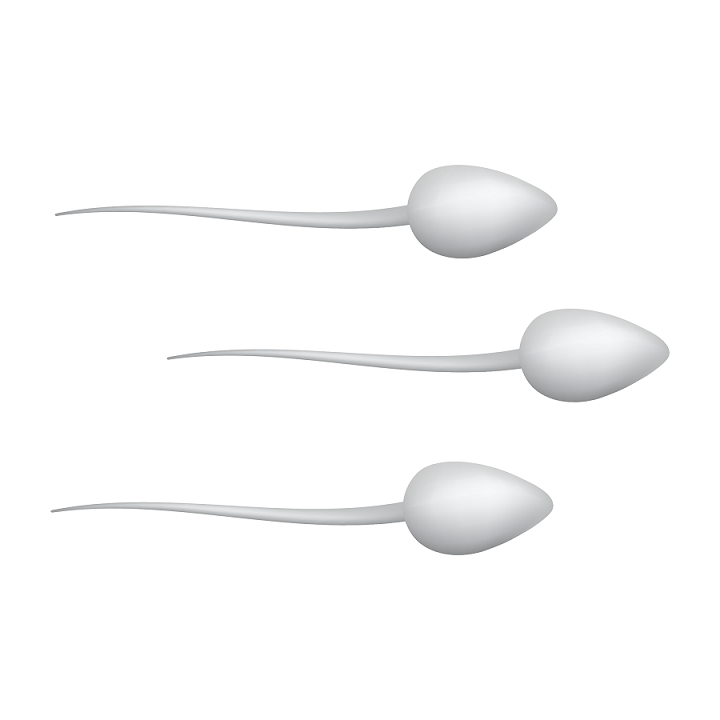
Fertility Treatment Success Rates
January 7, 2020
The Emotional Side of Infertility: First Steps
January 28, 2020An excerpt from Fertility & Beyond: Join the Conversation
By Tom Turner, M.S., ELD (ABB), Embryologist
Let’s look at the journey a single egg takes.
Your egg starts its journey at the moment of retrieval! So, let’s say the egg retrieval is at 6am on a Monday.
We call this Day 0 (zero).
The tubes are immediately brought to the embryologist where the eggs are taken out and put into a dish. At this point, they locate the eggs and look for the cumulus mass. These are little cells that work to permit the fallopian tube to pick up an embryo. However, since much of the early work is being done in a lab, and not in the body, we don’t need them. As such, they are removed.
Next, the eggs are put into a fertilization medium and placed in the incubator.
Meanwhile, another embryologist is usually working on the sperm and making a decision as to whether it’s going to be an ICSI case or a regular insemination case.
They will wash the sperm, put it into a tube, and place it into an incubator where it will stay until either the insemination or ICSI later that same day.
If it’s an insemination case, then approximately six hours after the retrieval we’ll simply place the egg and the desired number of sperm together in a small drop of medium. Then, it goes into the incubator and sits overnight.
If it’s an ICSI case, it’s slightly different, as we have to inject the eggs. Before we can proceed, we must see if those eggs are mature first. If they are mature, then we simply inject the sperm into them. If not, then the eggs go back into the incubator for a bit longer. If they mature, they will be injected later that day. Once they’re injected, they go back into the incubator overnight again.
The following morning (let’s say Tuesday) is called Day 1.
The eggs are removed from the incubator and checked for fertilization. When the eggs are removed from the incubator, they are placed under a hood, which provides a sterile, warm environment. Additionally, their dishes have a layer of culture oil overlayering their drops of medium to prevent evaporation and contamination.
The fertilized eggs are transferred into a growth medium where they will stay from Tuesday, Day 1, until Day 5, 6 or 7, if needed. This growth medium will support their growth for the entire time.
Day 3, (now it’s Thursday) is another milestone day.
The embryos are removed from the incubator and evaluated for their growth.
Depending on the type of patient (i.e. regular transfer, freeze all with transfer later, or biopsy), we may simply record the information on Day 3 or we may need to take action. For instance, if the embryos are going to be biopsied, we have to prepare for the biopsy by making a small hole in the Zona in order to allow some of the cells to start peeking out. As the embryo grows and expands, some of the cells will begin to emerge from the shell in order for us to biopsy them on Day 5.
Day 5 (now it’s Saturday) is the next time the embryos are taken out and evaluated.
If the patient were going to have a regular transfer, then we’d take a look and see which embryo is the best growth-wise. That embryo would then be moved to a separate dish and separate drop. The ones that were not chosen will go into another dish and drop to be frozen at some point during the day via vitrification. The fresh embryo transfer would happen on Day 5.
At this stage, we’re looking for a well-formed inner cell mass (which will form the fetus) and trophoblast (which will form the placenta). If that’s not present or clearly defined, the remainder will stay in the incubator and await additional evaluation on Day 6 (Sunday) and on Day 7 (Monday), if necessary.
If it’s a biopsy case, then we take the embryos to another dish to remove cells in order to send them off to a genetics laboratory for testing. The remainder of the embryos would be put back into the incubator to be frozen later that day.
Biopsy Case
In the case of a biopsy, a handful of cells (5, 6, maybe 7 cells) are removed from the trophoblast (placenta) and labeled with the particular embryo number. When the results come back, the embryos can be matched with the test results. Test results can focus on screening embryos for chromosomal abnormalities or can focus on diagnosing a genetic disorder, such as hemophilia, for example.
Then, when the patient is ready to come back for the transfer in the next month or so, the best quality embryo can be transferred. In cases where the embryo was biopsied, we’d transfer the best quality embryo that is chromosomally normal and/or does not have any defective genes.
Whether or not you are doing a fresh cycle transfer, or coming back a month or so later for a frozen cycle, the next part of the process is pretty consistent, with the exception of not needing to thaw the embryos in the case of a fresh transfer.
In the case of a “fresh” transfer, we would select the best embryo and put it in a separate container. The others that are good quality would be put in another dish and frozen later.
As the transfer time approaches, the embryo will be placed into a separate medium, as it’s going to be out of the incubator for a few minutes before the transfer.
Once the patient is ready to go, the embryo is placed into the catheter and transferred in a matter of seconds.
This is the journey a single egg takes!
About Tom Turner, M.S., ELD (ABB), Embryologist
Background:
Tom Turner grew up in Birmingham, Alabama and graduated with a B.S. in Biology from Jacksonville State University in Alabama. He went on to the University of Tennessee where he earned a master’s in zoology, after which he took a job at the University of Texas Health Science Center in San Antonio in the Department of Obstetrics. He worked as a technologist in their laboratories, mostly in the area of egg transport. Back then, it was everything to do with the oviduct.
This is where he worked with a lot of embryos including those of monkeys, baboons, rabbits, rats, and so on.
Like most people back in the early days of IVF, he sort of fell into the field because there were so few people in the sector and very few programs. He attributes some of it to simply being in the right place at the right time and working with a great mentor.
In 1983, Tom was asked to join an IVF clinic at its inauguration based on his experience in handling a lot of embryos.
At that time, there was no such thing as a “clinical embryologist.” Given his training with animal embryos, he was chosen to be a part of their IVF program.
It was a time when everyone was struggling to achieve a pregnancy. People weren’t sure what to use in the laboratory, so he was part of a team trying a variety of things, ultimately landing on GIFT, or Gamete Intra Fallopian Transfer. This procedure took the laboratory factor largely out of the process since IVF wasn’t doing very well.
In 1986, Tom took a job in Orlando, Florida, where he was able to mentor with Dr. Jacques Cohen, who came from Edwards and Steptoe’s clinic in England, and was one of the best embryologists in the world. Under his mentorship, Tom developed his knowledge and skill as an embryologist.
In 1993, Tom had an opportunity to move to Austin to work with Dr. Thomas Vaughn and Dr. Kaylen Silverberg at Texas Fertility Center, where he stayed for over 22 years. In addition to running several successful IVF laboratories, Tom has served in national leadership positions and as a consultant to IVF programs worldwide.
Contact Information
Email: tomturnertx [@] gmail.com
Get your copy of Fertility and Beyond: Join the Conversation on Amazon.





